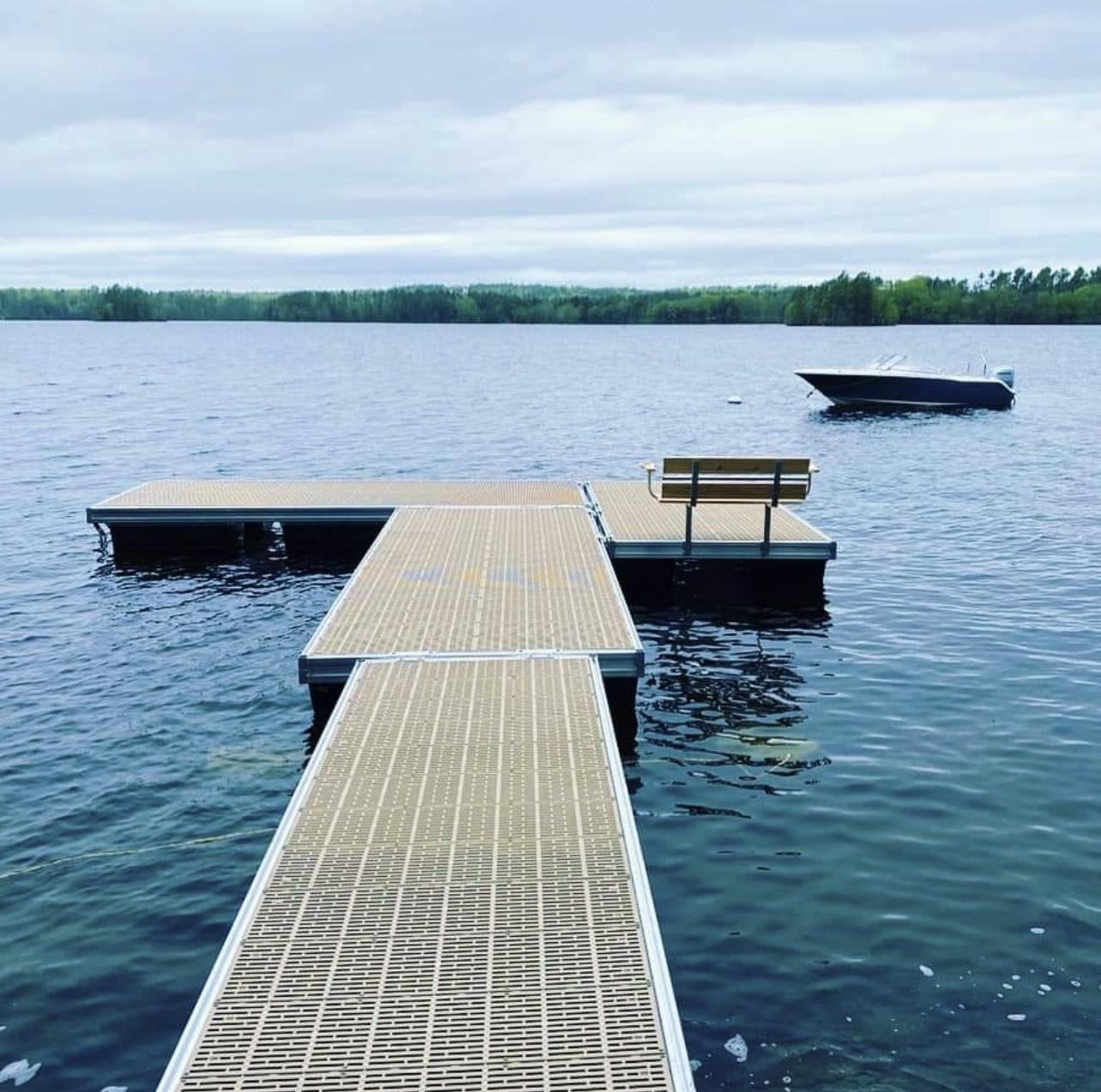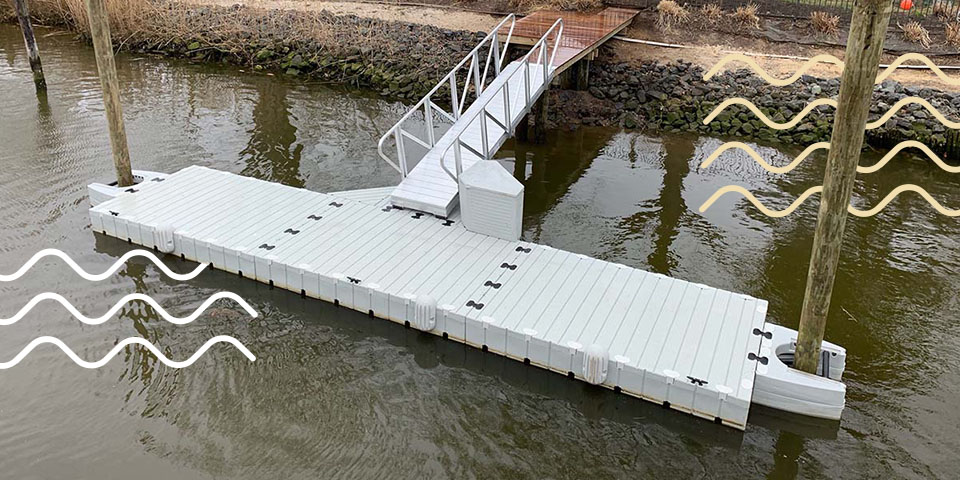Discover the Perfect Floating Dock Builder to Bring Your Waterfront Vision to Life
Discover the Perfect Floating Dock Builder to Bring Your Waterfront Vision to Life
Blog Article
Create the Perfect Docking Remedy With Floating Docks
Floating docks existing a functional remedy for a selection of maritime requirements, adapting flawlessly to changing water degrees and varied vessel types. Their modular nature enables fast setup and relocation, yet the choice of appropriate materials and design functions is crucial for guaranteeing both capability and aesthetic charm. As we explore the necessary aspects that add to the performance of floating docks, several essential variables concerning stability and maintenance will arise, questioning regarding exactly how to maximize your docking experience. The succeeding conversation will certainly illuminate these important considerations.

Benefits of Floating Docks
Floating docks offer numerous advantages that make them a perfect option for different maritime applications. Unlike dealt with docks, floating docks increase and loss with the tide, making sure constant ease of access for vessels.
Additionally, floating docks are typically much easier and quicker to mount compared to traditional set structures. Their modular style enables uncomplicated assembly and disassembly, facilitating maintenance and moving when needed. This adaptability is especially advantageous for momentary applications or in environments where conditions might alter.
Floating docks additionally have a tendency to be much more eco pleasant, as they minimize disturbance to the seabed and surrounding aquatic environments. Their buoyant nature reduces the threat of damage to marine life, promoting a much healthier environment. These docks can be personalized to fit numerous vessel dimensions, making sure that they satisfy specific functional needs.
Inevitably, the combination of flexibility, convenience of setup, and ecological factors to consider makes floating docks an extremely effective service for a large range of maritime needs.
Selecting the Right Materials
Picking the proper products for floating docks is vital to guarantee longevity, longevity, and security. The option of products straight influences the dock's performance in numerous ecological conditions, including direct exposure to water, sunshine, and potential wear from marine website traffic.
Common materials used for floating docks include aluminum, timber, and high-density polyethylene (HDPE) Aluminum is light-weight, corrosion-resistant, and calls for marginal maintenance, making it a superb option for durability. Nonetheless, its first cost can be greater contrasted to other products.
Wood, while cosmetically enticing and providing a typical appearance, can be prone to rot and bug damages otherwise appropriately treated. For that reason, making use of pressure-treated wood or normally resilient varieties like cedar or redwood can alleviate these concerns.
HDPE is a prominent choice because of its resistance to UV rays and chemicals, together with being eco-friendly. floating dock company. It is light-weight and available in numerous shades, enabling personalization
Inevitably, the appropriate product selection will certainly depend upon certain requirements, consisting of budget plan, desired visual appeals, and ecological factors to consider. Mindful examination of these variables will certainly bring about a resilient and effective floating dock remedy.
Style Factors To Consider for Stability
When developing floating docks, making sure security is an essential facet that can significantly influence their capability and safety and security. Security in floating dock style is affected by various factors, including buoyancy, weight circulation, and the setup of components.
Weight distribution is important; equally distributing loads across the dock avoids turning and enhances stability. This can be accomplished via calculated placement of docking devices, such as fenders and cleats, along with correct spacing of floats. In addition, the measurements of the dock must be attentively intended. Broader styles can use boosted stability, especially in rough water conditions, while longer docks might need added supports to avoid drooping.
One more vital consideration is the ecological effect, consisting of wave action and wind. Integrating features such as sidewalls or skirting can help reduce the effects of ecological forces, keeping security in adverse problems. Eventually, a combination of thoughtful design, material option, and understanding of ecological aspects will produce a floating dock that fulfills both stability and security demands.
Installation Tips and Strategies

Next, safeguard the needed authorizations and stick to regional regulations, which might dictate page installment methods and ecological factors to consider. Engage a certified specialist experienced in floating dock setups if required. Usage high-quality materials developed for marine settings to improve toughness and durability.
When positioning the dock, align it parallel websites to the coastline to facilitate very easy access. Ensure that the anchoring system is durable, employing concrete blocks or helical supports to stabilize the dock versus wind and wave activity. It's critical to represent seasonal water level variations, including prospective ice motion in cooler climates.
Throughout the installment, verify the dock's floatation and stability before completing the anchoring. Frequently check the installment for any type of indicators of wear or damage. By adhering to these techniques and tips, you can achieve a safe, practical, and visually pleasing floating dock setup that satisfies your demands.
Maintenance and Care Guidelines
Maintaining and caring for floating docks is vital to lengthening their life-span and making sure safe use. Regular examinations should be conducted to recognize any indicators of wear, damage, or marine development. Search for splits, loose fittings, or discolored areas on the dock's surface, as these issues can endanger structural stability.
Cleaning up is crucial. Make use of a pressure washer to eliminate algae, barnacles, and debris, which can collect with time. For persistent development, think about environmentally friendly cleansing representatives that will not harm aquatic life.
Furthermore, examine the mooring lines and anchors frequently to ensure they are safe and cost-free from rust. Replace any type of frayed or harmed lines promptly to maintain stability.
Throughout extreme climate, such as storms or freezing conditions, take precautionary steps. Safeguard the dock with additional mooring lines and, if feasible, remove any straight from the source kind of detachable parts to avoid damages.
Verdict
In final thought, the application of floating docks presents a efficient and versatile docking solution appropriate for various maritime applications. With proper installation and regular upkeep, floating docks can offer trusted and effective docking experiences for a large range of vessels.
As we explore the important aspects that add to the performance of floating docks, a number of crucial elements pertaining to stability and maintenance will arise, increasing concerns concerning exactly how to enhance your docking experience. Unlike dealt with docks, floating docks increase and fall with the trend, making certain regular access for vessels.When making floating docks, making certain security is an essential facet that can considerably impact their functionality and security. Stability in floating dock layout is influenced by various elements, including buoyancy, weight distribution, and the plan of components. Ultimately, a mix of thoughtful layout, material option, and understanding of environmental elements will certainly generate a floating dock that meets both security and security demands.
Report this page